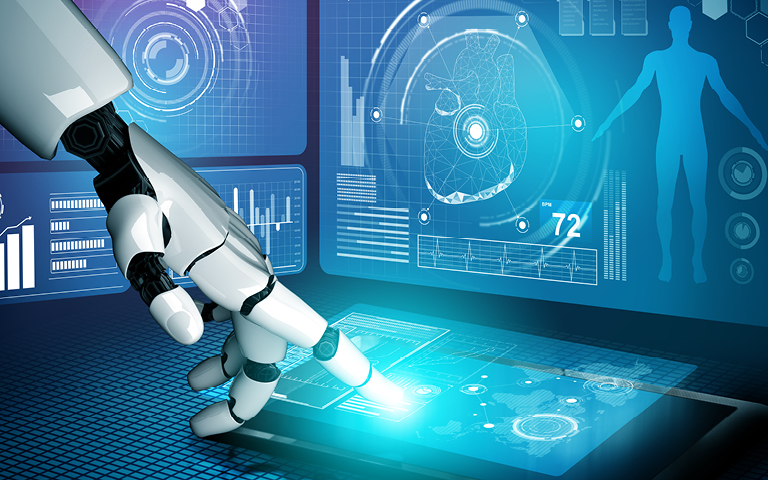“AI has the ability to revolutionize medical imaging, but we’re just scratching the surface of what AI can do,” says Navy Commander Roger Boodoo, MD, an assistant professor of radiology at the Uniformed Services University of the Health Sciences. “Radiology has yet to fully embrace the promises of AI, in part due to a lack of large datasets.”
Boodoo recently completed a clinical informatics fellowship at the University of Illinois Hospital and Health Sciences System in Chicago where he sought to address that very issue. During his fellowship, Boodoo developed “Diagnosis Protocol — Using Blockchain to Accelerate AI in Medical Imaging,” a project that earned him the People’s Choice Award from the Society for Imaging Informatics in Medicine, beating out nearly 30 other submissions. The Bulletin caught up with Boodoo to discuss the future of AI in radiology and his new role in the ACR military radiology subcommittee.
What was the goal of your Diagnosis Protocol project?
During my fellowship I became fascinated by Blockchain, following the ONC competition, and thought it could solve some of the pain points in medicine. My cofounder (a pathologist) and I were trying to solve the problem with AI and why it hasn’t taken off in radiology and pathology — partly because we’re lacking large, curated datasets. We wanted to build a platform to incentivize residents to label images that could feed into an AI algorithm. What was unique is that we were trying to tokenize the work with Blockchain. Radiologists and pathologists would be rewarded with a token for the amount of work they did, and if that large dataset ever sold to one of the bigger AI companies, the user would be compensated.
How will AI eventually be like having a second set of eyes on every diagnostic image?
There’s a saying, “If you never miss anything, you’re not reading enough,” because we all miss things. As a human being, sometimes you get distracted and you just miss something and you don’t realize. AI can review the study and either flag things before you read the study, so you know where to look initially, or after you’ve read the study, giving you a second chance to look at something.
That second set of eyes will lead to fewer missed cases. Occasionally, a radiologist will miss something that looks very obvious to someone else, but it’s not because they’re a bad radiologist. They could have been distracted or had a bad day because human beings are emotional creatures. To have another set of eyes that is never tired, never distracted, and never emotional is always beneficial.
That second set of eyes will lead to fewer missed cases.
How have your experiences in the military influenced your current work?
Because I’ve had the opportunity to work with the three military services at the Defense Health Agency (a joint, integrated combat support agency that enables the Army, Navy, and Air Force medical services), I can see the larger picture of how the Department of Defense (DOD) healthcare is comprised. The DOD operates service-specific hospitals and many things are done in triplicate with many vendors; things aren’t tightly integrated. I’m always looking for ways to make things more efficient.
At the Defense Health Agency we’re working with Veterans Affairs (VA) because we’re about to be on the same EHR system. My boss often says, “We can’t innovate unless we standardize.” We’re trying to figure out how to align on other things and create more standardization instead of the divergence that existed before.
Why did you become involved with the ACR military subcommittee?
My philosophical belief is that collectively, as military radiologists, we should try to use our knowledge to help the public because the DOD and the VA are funded by American tax dollars. Especially during the ongoing pandemic response, we can help civilian communities by educating them on the best way to set up a CT machine in unusual environments such as a gymnasium or a tent.
We also work on helping active duty doctors with the transition to civilian life. It can be challenging to join an outside practice when you’re already a seasoned, specialized radiologist, because most new hires at these practices come straight from a residency. We’re trying to make that transition as smooth as possible. We want to take care of our military members who have a lot to offer.

